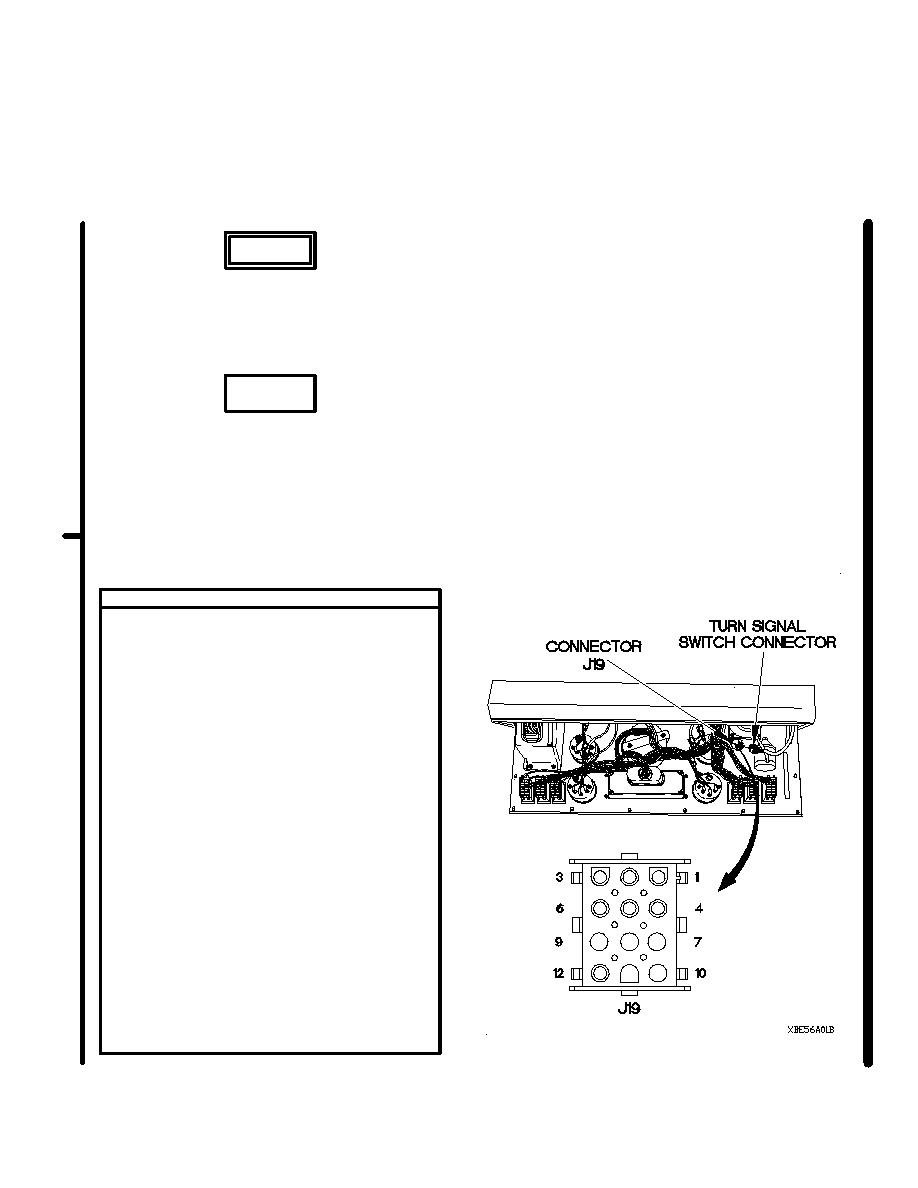 |
|||
|
|
|||
|
|
|||
| ||||||||||
|
|
 TM 9-2320-366-20-1
WARNING
Remove rings, bracelets, watches, necklaces,
and any other jewelry before working around
vehicle. Jewelry can catch on equipment and
cause injury or short across electrical circuits
and cause severe burns or electrical shock.
CAUTION
Use care when testing electrical connectors.
Do not damage connector pins or sockets
with multimeter probes. Failure to comply
may result in damage to equipment.
NOTE
Inspect connector pins/sockets for damage,
corrosion, and serviceability. Check that
connector pins are not pushed back and
are capable of making good contact.
VOLTAGE TEST
(1) Remove instrument panel assembly for
access (para 7-15).
(2) Disconnect connector J19 from turn signal
switch connector.
(3) Set multimeter to volts DC.
(4) Connect positive (+) probe of multimeter to
connector J19 socket 5.
(5) Connect negative (-) probe of multimeter to
ground.
(6) Position main light switch to SER DRIVE
(TM 9-2320-366-10-1.
(7) Position hazard lights switch to on
(TM 9-2320-366-10-1) and note reading on
multimeter.
(8) If volts DC pulse is not present, Repair
wire 1566 from connector PX14 socket 2
to connector J19 socket 5 (para 2-45) or
replace WTEC II dashboard cable
assembly (para 7-10) or WTEC III
dashboard cable assembly (para 7-11).
(9) If volts DC is present, replace turn signal
switch (para 7-26).
(10) Position hazard lights switch to off
(TM 9-2320-366-10-1).
(11) Position main light switch to OFF
(TM 9-2320-366-10-1).
Change 1
2-711
|
|
Privacy Statement - Press Release - Copyright Information. - Contact Us |